Alexander 2.4
Alexander the Great (*356; r. 336-323): the Macedonian king who defeated his Persian colleague Darius III Codomannus and conquered the Achaemenid Empire. During his campaigns, Alexander visited a.o. Egypt, Babylonia, Persis, Media, Bactria, the Punjab, and the valley of the Indus. In the second half of his reign, he had to find a way to rule his newly conquered countries. Therefore, he made Babylon his capital and introduced the oriental court ceremonial, which caused great tensions with his Macedonian and Greek officers.
From Caria to Pamphylia
Halicarnassus
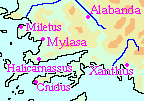
When the Persian king Darius III Codomannus heard about the defeat of the satraps at the river Granicus, he appointed Memnon of Rhodes as supreme commander in the west. Memnon's first aim was to win time, so that the Persians could regroup. Therefore, he remained in the capital of Caria, Halicarnassus (modern Bodrum), which he prepared for a long siege. As long as he stayed there, the Macedonians were unable to go to the east, where several satrapies lay ungarrisoned and undefended since their armies were destroyed at the Granicus. Moreover, king Darius gained precious time and was able to muster a large army, which he could use to push back the invaders to Europe. Eventually, the Macedonians would defeat this army in the battle of Issus, but it was, in fact, a battle that had been forced upon them by Memnon.
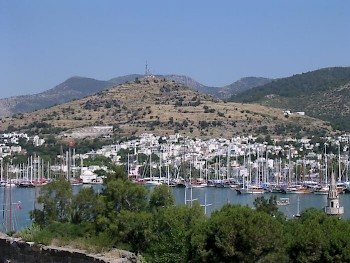
Alexander was obliged to take Halicarnassus, and he must have understood that whatever the outcome of the siege, he was to be the loser. At this moment, Memnon had at least 300 ships and he could evacuate the garrison at every moment he liked. Another Persian advantage was that the walls of Halicarnassus were recently built and exceptionally strong: the architects knew how to deal with siege engines and had taken countermeasures. Maybe Alexander could take Halicarnassus, but he would suffer severe losses, whereas the Persians could leave the city before their losses would become unacceptable.
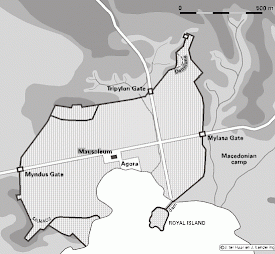
And this was what happened. Eventually, Halicarnassus was taken by an attack in the northern part of the city, but many of Alexander's men were killed and the Persian garrison sailed away when Memnon saw fit. After one of his failed attacks, Alexander was even forced to ask for a truce to recover the Macedonian dead, something that he had never done before and was never to do again. The ancient sources present the siege of Halicarnassus as one of the victories of Alexander, but he must have known better.
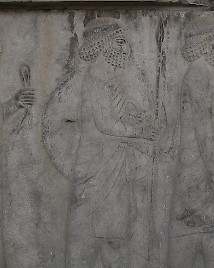
Meanwhile, Alexander had found a new ally. The region where he was now campaigning, Caria, was ruled by the severely divided family of Maussolus, who had died in 353. But in 334 his brothers and sisters were still quarreling about the succession. One of them, a princess named Ada, was able to gain Alexander's confidence and became sole ruler of Caria. In this way, Alexander gained control of the Carian countryside. This was a big advantage, because in the past, Carian guerillas had been able to inflict terrible losses on invading forces.
Lycia and Pamphylia
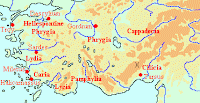
At this stage of the campaign, Alexander and his generals must have decided to continue their expedition until they had subjected the towns of Phoenicia. Probably, this was not the original plan. The official aim of the war was to liberate the Greek towns in Asia Minor - an aim they had already reached - and to punish the Persians for their campaign of 480/479, a deliberately vague aim that was reached whenever it was decided to have been reached. Conquering Phoenicia was an unheard-of idea, but it was a strategic necessity to anyone who wanted to be absolutely sure that no enemy navy would ever sail into the Aegean Sea again.
Consequently, the Macedonian army moved to the east along the coast: one by one, the ports of Lycia and Pamphylia were conquered. None of these was as well fortified as Halicarnassus, and a show of strength was usually sufficient to force them into surrender. These towns would no longer offer shelter to the Persian navy. Alexander would master the Persian fleet by seizing its harbors. The new satrap of Lycia and Pamphylia was Nearchus, a personal friend of Alexander, who was to play a major role in the second half of his reign.
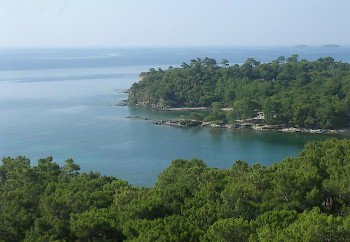
There is one incident that deserves to be mentioned. One day, the Macedonian army moved along the Lycian coast, and the soldiers noticed that the waters seemed to recede to let them pass. Modern scholars deny that this incident ever took place because the natural circumstances make it impossible, and Alexander's court historian Callisthenes of Olynthus (like Alexander, a pupil of Aristotle of Stagira) must have known this too. Yet he choose to present the receding sea in his narrative as the sea doing Alexander obedience. It was the first step towards the later belief that Alexander was (the son of) a god.